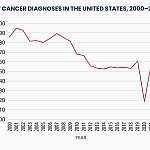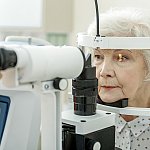
A new article, which is a review of existing research, argues that physical activity can significantly enhance one’s quality of life in one’s later years.
The article notes that a lack of physical activity is a risk factor for more than 30 chronic conditions that affect older adults.
The amount of exercise widely recommended for younger people — 150 minutes of moderate to vigorous physical activity each week — also applies to older people.
The review states that research finds that 150 weekly minutes of moderate physical activity can reduce all-cause mortality by 31% compared to a week with no appreciable physical activity.
Exercise can improve a person’s strength and thus their physical independence while reducing their likelihood of falling, a major hazard later in life.
Being physically active is associated with an overall improvement in quality of life, as well as stronger cognitive and mental health.
One of the central points of the review is that one’s age, frailty, or physical impairments do not mean that physical activity should be avoided, considering the many health benefits it can confer. Though they are factors to accommodate, they should not stop a person from moving more to live better.
The article is published in the Canadian Medical Association Journal.
“As a review article, the main purpose is to synthesize available literature that is up-to-date,” explained first author Jane Thornton, MD, PhD, CCFP [SEM], Canada Research Chair and Clinician Scientist specializing in physical activity in the prevention and treatment of chronic disease.
The document is, first and foremost, directed toward physicians and healthcare providers, to emphasize the point that “many older adults who are living with chronic disease or who are inactive could benefit substantially by incorporating an active lifestyle.”
“Too few physicians counsel their patients on physical activity (for a variety of reasons) and we hope this becomes a call to action which at the same time helps take the guesswork on how to prescribe physical activity to older adults.”
— Jane Thornton, MD, PhD, CCFP [SEM]
To that end, the article includes self-questionnaires with which clinicians can guide themselves as they develop appropriate exercise plans for their patients.
It is common for an older person to acquire an ever-growing number of medications as they age. It may be that physical activity can resolve some of the issues they address without pills.
Ryan Glatt, MS, CPT, NBC-HWC, senior brain health coach and director of the FitBrain Program at Pacific Neuroscience Institute in Santa Monica, CA, who was not involved in the study, pointed out that it is easy to find one’s pillbox growing through polypharmacy, the use of multiple medications to manage one condition or the effects of other medications.
“Exercise provides systemic benefits, including a reduction in all-cause mortality, fall prevention, and cognitive and mental health improvements. It is safer and less invasive than medications or surgeries, with fewer side effects,” said Glatt.
“Few studies have made head-to-head comparisons of physical activity versus pharmaceutical or surgical modalities, and of course, it depends on the severity and natural prognosis of the condition. In the article, we outline a number of conditions and things to consider before starting an exercise program,” said Thornton.
“There is always,” she cautioned, “a (small) risk of injury or exacerbation of symptoms of their condition, and/or risk of cardiovascular event. However, similar (and often greater) risks exist with pharmaceutical and surgical modalities, and the benefits of physical activity on health generally outweigh the risks. Often, physical activity is used as a successful adjunct to other treatment modalities.”
If you are an older reader — or have an older person in your life — and are considering becoming more physically active, said Thornton, “The main message is that it is never too late to incorporate more physical activity into your life.”
Glatt agreed: “Physical activity is an essential but underutilized strategy for aging well.”
Thornton recommended that if you have any concerns, see your doctor. “They will ask,” she said, “about current levels of physical activity and if you have any risk factors or chronic illnesses/injuries that must be attended to first (i.e., absolute and relative contraindications).”
“Screening will help uncover any risk factors which may lead to further risk assessment through stress testing, or necessitate supervised exercise by a professional,” Thornton added.
“Older adults should begin with low impact activities, such as walking or swimming, and gradually progress toward 150–300 minutes of moderate activity per week. Incorporating resistance and balance exercises is also important, including weight-bearing activities.”
— Ryan Glatt, MS, CPT, NBC-HWC
“Under most circumstances and as long as medical conditions are stable,” encouraged Thornton, most older adults can gradually work up to that level of activity.
Finally, she said, “Older adults who become more physically active can potentially add years to their lives as well as higher quality of life to those years.”





